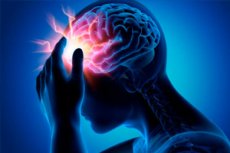New publications
Head injuries trigger previously unknown astrocytic tau protein accumulations
Last reviewed: 09.08.2025

All iLive content is medically reviewed or fact checked to ensure as much factual accuracy as possible.
We have strict sourcing guidelines and only link to reputable media sites, academic research institutions and, whenever possible, medically peer reviewed studies. Note that the numbers in parentheses ([1], [2], etc.) are clickable links to these studies.
If you feel that any of our content is inaccurate, out-of-date, or otherwise questionable, please select it and press Ctrl + Enter.

Scientists from Boston University and Columbia University conducted the largest analysis of postmortem brain tissue (556 samples) and found that chronic accumulation of aggregated tau protein in astrocytes goes far beyond the classic pathology of chronic traumatic encephalopathy (CTE). The work is published in the journal Brain.
What did the researchers do?
- Brain samples were collected from four groups:
- People with a history of moderate or severe TBI (n=77, survived >6 months)
- Contact athletes (n=45)
- Unhealthy controls (with primary neurodegenerative diseases; n=397)
- Healthy controls (no NDD; n=37)
- Immunohistochemical staining for tau was performed, and patterns of astrocytic pathology similar to aging-related tau astrogliopathy (ARTAG) and CTE-NC were identified.
Key Results
- Extended astrocytic tau pathology. In TBI/RHI (contact impact) samples, 65% of cases had astrocyte hyperplasia with tau deposits, compared to only 12% in the non-TBI RHI group.
- Independence from classical CTE markers: Many patients with contact sports exhibited astrocytic tau pathology without the typical perivascular cerebrospora structure of CTE.
- Generalization of aging processes. ARTAG patterns (perivascular and subependymal tau accumulation) were found in both TBI survivors and athletes, indicating accelerated aging changes caused by head injuries.
Why is this important?
- Previously, astrocytic tau pathology was associated primarily with age-related changes and CTE. New data show that TBI and even repeated “non-concussive” blows to the head in sports lead to a much broader spectrum of astrocytic abnormalities.
- This expands our understanding of how head injuries may trigger neurodegenerative mechanisms and suggests updating diagnostic criteria for post-traumatic encephalopathies.
Prospects
- Diagnostics: adding specific astrocytic tau markers to the standards for postmortem analysis of TBI patients.
- Prevention in sports: reducing repetitive impacts and reviewing safety protocols, even for minor collisions.
- Therapy: Developing drugs that target astrocytic tau activation may provide a new strategy for protecting the brain after injury.
This study highlights that neurodegeneration following head injury is not limited to the classic features of CTE but includes a more extensive astrocytic tau pathology that requires rethinking approaches to prevention and treatment.
